Words by Shine Cabantog and Dom Marasigan
It takes two to tango—when colors collide and music roars, art and sound move beyond the expression of the self as they become a shared language of defiance and hope. Gravity Art Space, a gallery located in Quezon City, builds that bridge with SanDale: Sa Madali, Nadadale, a public art exhibit paired with a one-night concert that fuses visual expression with live music. The exhibit displays different works created by various artists and using diverse mediums highlighting the consequences of careless development. Complementing the show is Isang Sandali!, a fundraising concert featuring various local bands in partnership with the Pawssion Foundation, where a portion of the proceeds goes to the organization for the betterment of the welfare of stray animals.
Teka muna, Sandale!
Public art isn’t just about putting creativity in unexpected places. In SanDale, it becomes a tool for visibility—a way to bring urgent environmental issues out of the gallery and into the places where people move through every day. By choosing sidewalks, posts, walls, and entryways as their canvas, the artists turned ordinary spaces into points of encounter. These locations shape how each piece functions: clear enough to register at a glance, yet layered enough to invite closer attention.
Running from July 11 to August 8, SanDale brings together student interns from Far Eastern University (FEU), University of the East (UE) – Caloocan, University of Santo Tomas (UST), and the Ateneo de Manila University (ADMU) in a collaborative public art show installed across the gallery’s entrance and the streets surrounding it. Using everyday materials—from caution tape to tarpaulins to hollow blocks—the artists respond to the environmental crises unfolding before them by turning these objects into visual markers of loss, exclusion, and irreversible damage. These works, grounded in lived experience, reflect the frustrations of life in cities shaped by environmental neglect, along with the urgency to make that damage visible.
One of the clearest examples of this approach is a piece that tackles the Kaliwa Dam, an ongoing government infrastructure project in the Sierra Madre mountain range intended to ease Metro Manila’s water shortages by supplying an additional 600 million liters of water daily. Tubig Para Kanino? by Ishi de Guzman, Julia Relucio, Alex de Jesus, and Miguel Mapalad of FEU centers on this, along with the dam’s long-term environmental and social impact. With media attention fading, the group noted how the dam’s continued construction is now largely unnoticed. Placed in an area where people often stop to smoke, their installation (composed of ripples of resin and a grass-textured QR code on a mirrored surface) invites casual engagement by stripping away the formality of a gallery. In doing so, it encourages viewers to interact more openly, framing thoughtful engagement as something that can happen in the middle of one’s daily routine, not just as a distant or formal act of critique. For instance, the mirror draws in viewers to see themselves in the issue, literally reflecting their image as they come face-to-face with the dam’s consequences. To this day, the dam remains controversial for its threats to Sierra Madre’s biodiversity, its displacement of Indigenous communities, and its ties to foreign debt, making it not just a local issue, but a national one that implicates all of us as stakeholders in the country’s environmental future.

Two solo works, ‘Di Ba Kaya by Miguel Mapalad of FEU, and No Sea Life Allowed by Byron Viray of UE, address the impacts of marine pollution and land reclamation. Mapalad reimagines jellyfish using plastic bottles, drawing from reports of sea turtles mistaking plastic for food. The result is a piece that blurs the line between life and waste—something that confronts viewers with the effects of plastic pollution. Viray, on the other hand, responds to land reclamation in Manila Bay by taping fish cutouts to a wall with caution tape, thus creating an image of marine life being fished out and replaced by human infrastructure. Both works repurpose trash to call attention to how human development continues to displace marine life, often without regulation or accountability for the ecological damage left behind.
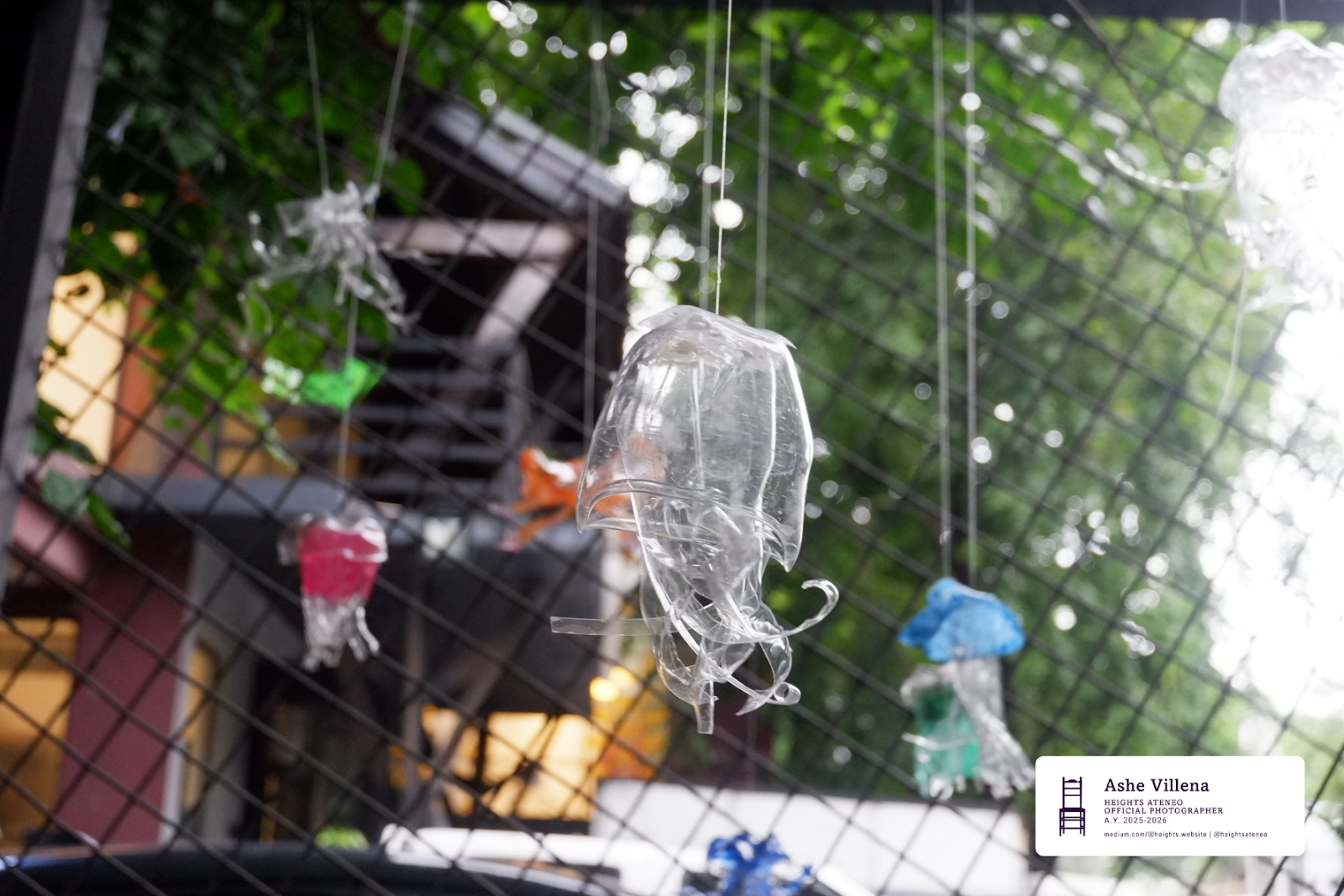
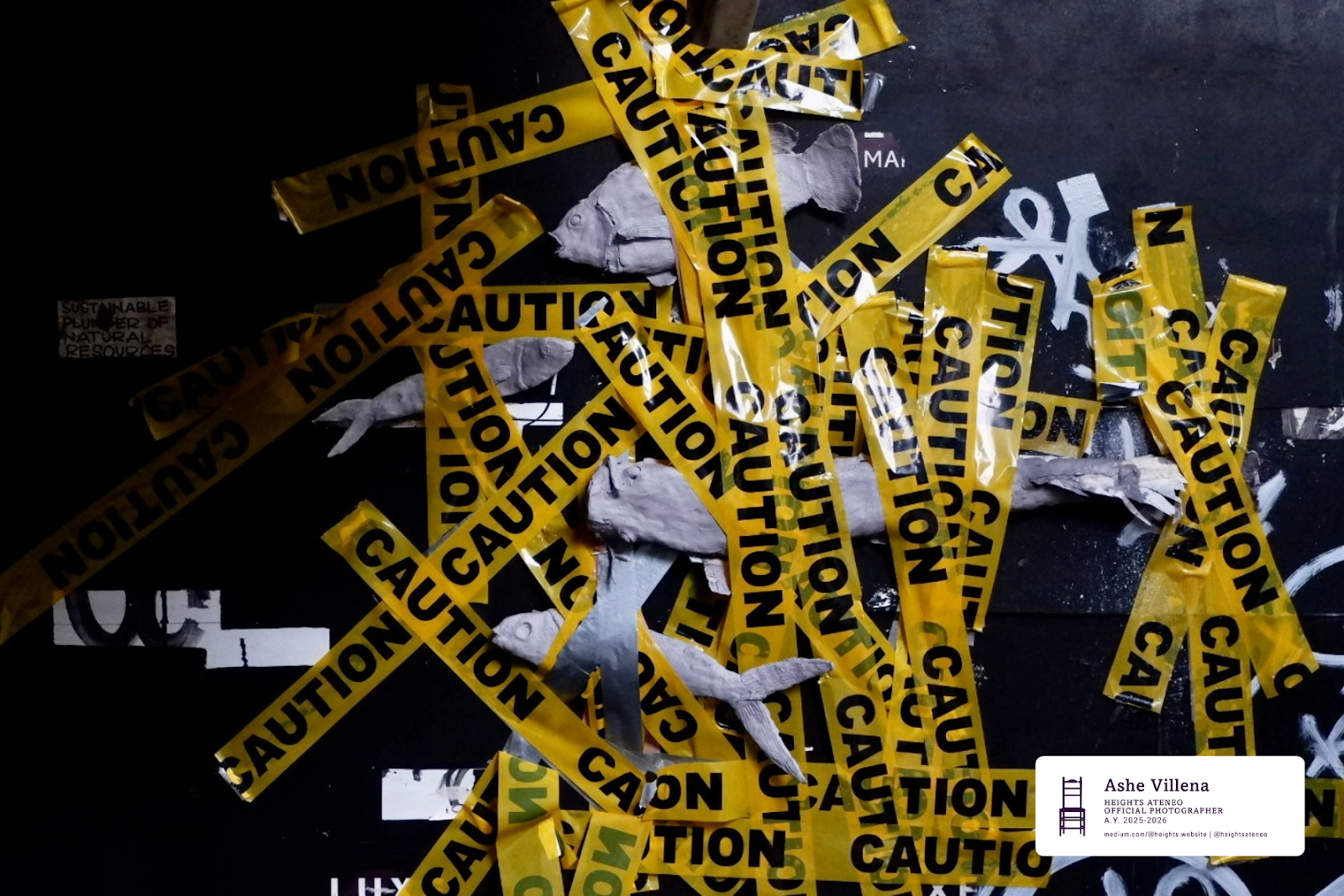
Also working with familiar construction materials, Set In Stone by Arabella Agena, Jude Filart, Junyz Quirino, and Jersey Breis of UE features hollow blocks engraved with the Ctrl+Z symbol. Referencing the digital “undo” command, the piece points to how irreversible environmental damage becomes when treated with the same ease as editing a document.
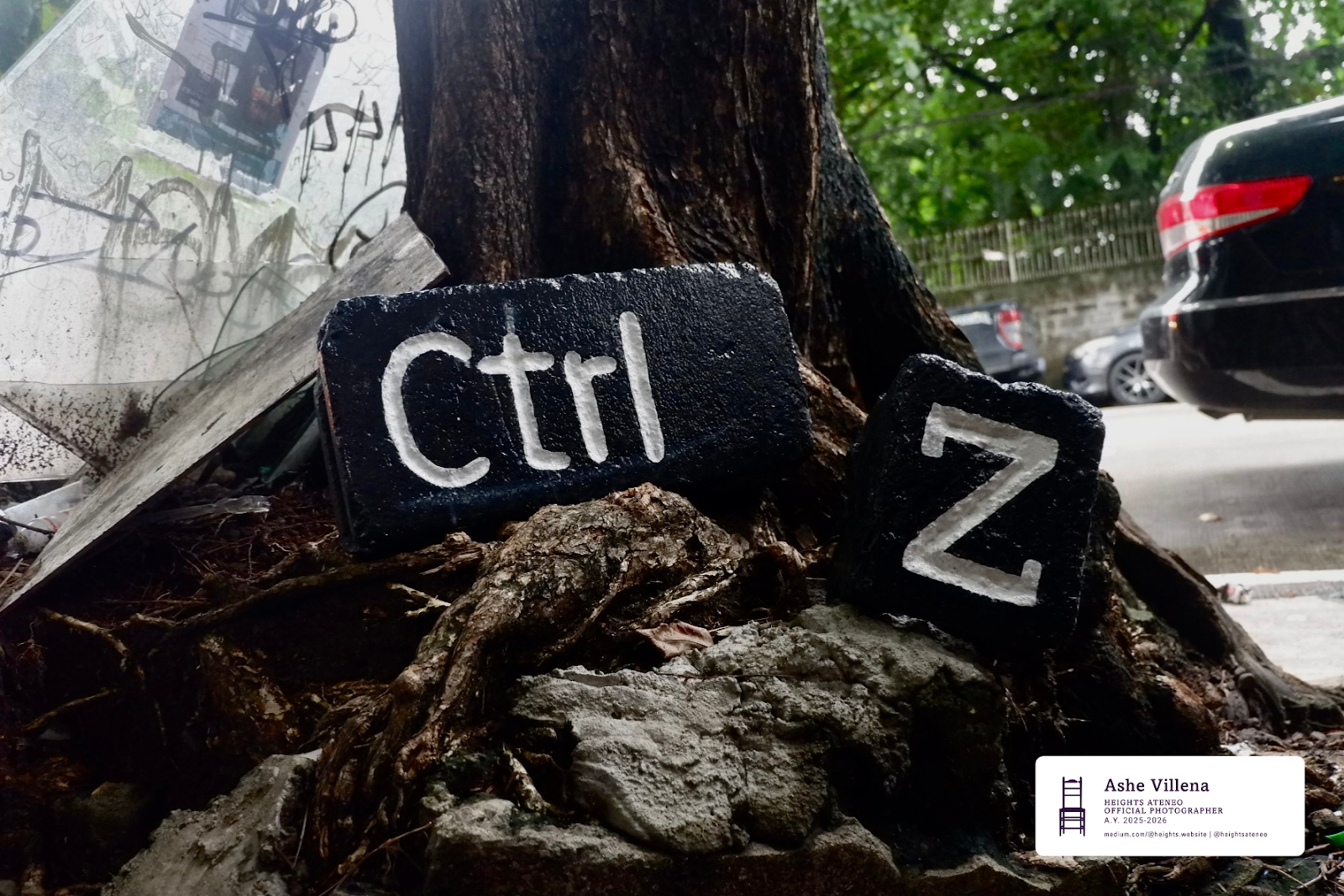
The final piece, Species of Interest by Jamille Lao, Regine Cai, Bernadette Alberto, and Samantha Manzano of UST, takes its cue from missing and wanted posters commonly seen on street poles. In place of people, the group features endangered and invasive species found in the Philippines. Each poster is placed in a setting that echoes the species’ natural habitat—plants near gardens, turtles close to water—so the work blends into the environment rather than standing apart from it. These artists described this as a way to raise awareness through something visually familiar and easy to engage with. As days passed, some pieces began to weather, tear, and attract graffiti. However, the artists saw this not as damage but as part of the work’s intent: evidence of how the posters, much like their environment, are constantly altered by human activity and public response. In this way, the transformation of the piece over time became part of SanDale’s success. Rather than resisting change, the work embraced it, turning public interaction into a form of authorship. It showed how placing art in public spaces allows it to take on new layers of meaning through time. The way passersby stopped, asked questions, or even left behind graffiti is proof that the public wants to see art, and will engage with it when given the opportunity.
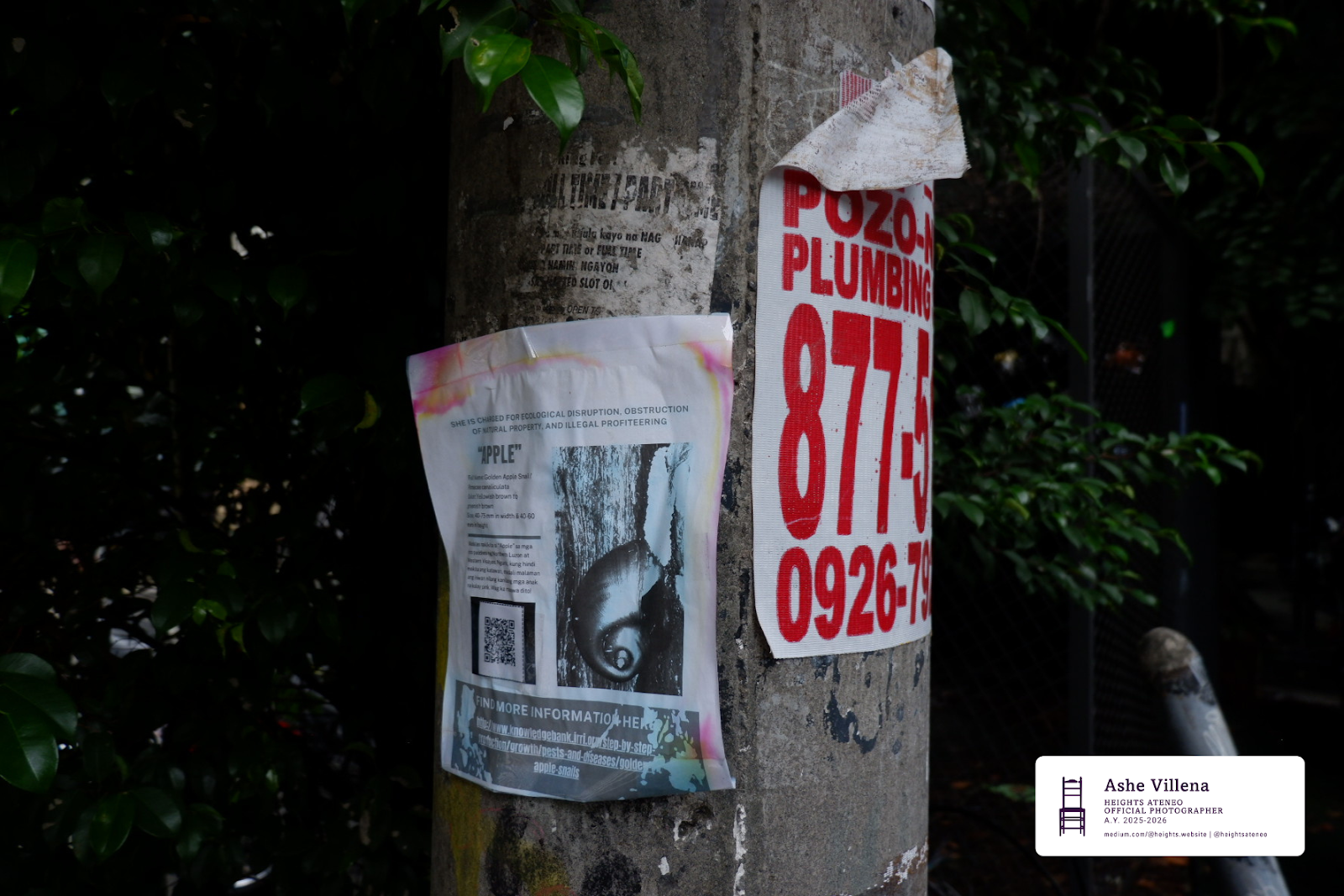
A common thread across the works is the use of everyday materials: objects already carrying meaning long before they became part of the art. Items like plastic bottles, caution tape, and hollow blocks—often associated with waste or hazard—are repurposed to draw attention to the very issues they symbolize. Through these interventions, the artists transform both the materials themselves along with the way the audience sees and interprets them.
Now, as another rainy season brings floods, evacuations, and rising waters across the country, the urgency behind these works becomes harder to ignore. SanDale urges us to look again—at the trash clogging gutters, the campaign banners left to rot in the rain, the developments that erase rivers, trees, and communities—and recognize that meaning, like change, can begin with what’s already around us. When environmental harm is constant and unevenly felt, even a moment, a glance, or a question can become a step toward accountability.
Makinig kahit Isang Sandali!
In connection with the public art exhibition SanDale, Isang Sandali! became a venue for visitors to appreciate the local underground music scene while supporting the advocacy of stray animal protection. Unlike typical gig venues, Gravity Art Space offered a more intimate and immersive scene as the concert was held within another ongoing art exhibit, No F#$@!ng Adjectives, Just Family Photos. The small, enclosed space of the venue, with the floor and the stage being one, brought the audience and the musicians closer together.
Held last July 18, the concert brought together some emerging musical artists in support of Pawssion Foundation, the partner beneficiary of SanDale. These artists, namely, MISTER MEYERS, All Organic Milk Goodness, sci fye, Fresh-iLL Club, HEY JUNE!, and Akemi, captivated the audience throughout the night with their different sounds and artistic acts.
Among the performers that took the stage was sci fye, a three-piece, punk-inspired band from Pasay, who describe their sound as “organized chaos.” The band does not just rock the stage; they also tell stories in hopes that their audience will resonate with them. For sci fye, music is more than just sound, as it is the most natural way to make sense of the world. “[Music] is an easy medium to get into for everyone to express themselves, kahit complex yung nafefeel mo.” shares Clem, sci fye’s singer and rhythm guitarist. “Sa music kasi, magagawan ng maganda yung expression kahit na sabihin natin negative yung [nararamdaman],” adds Neil, their drummer.
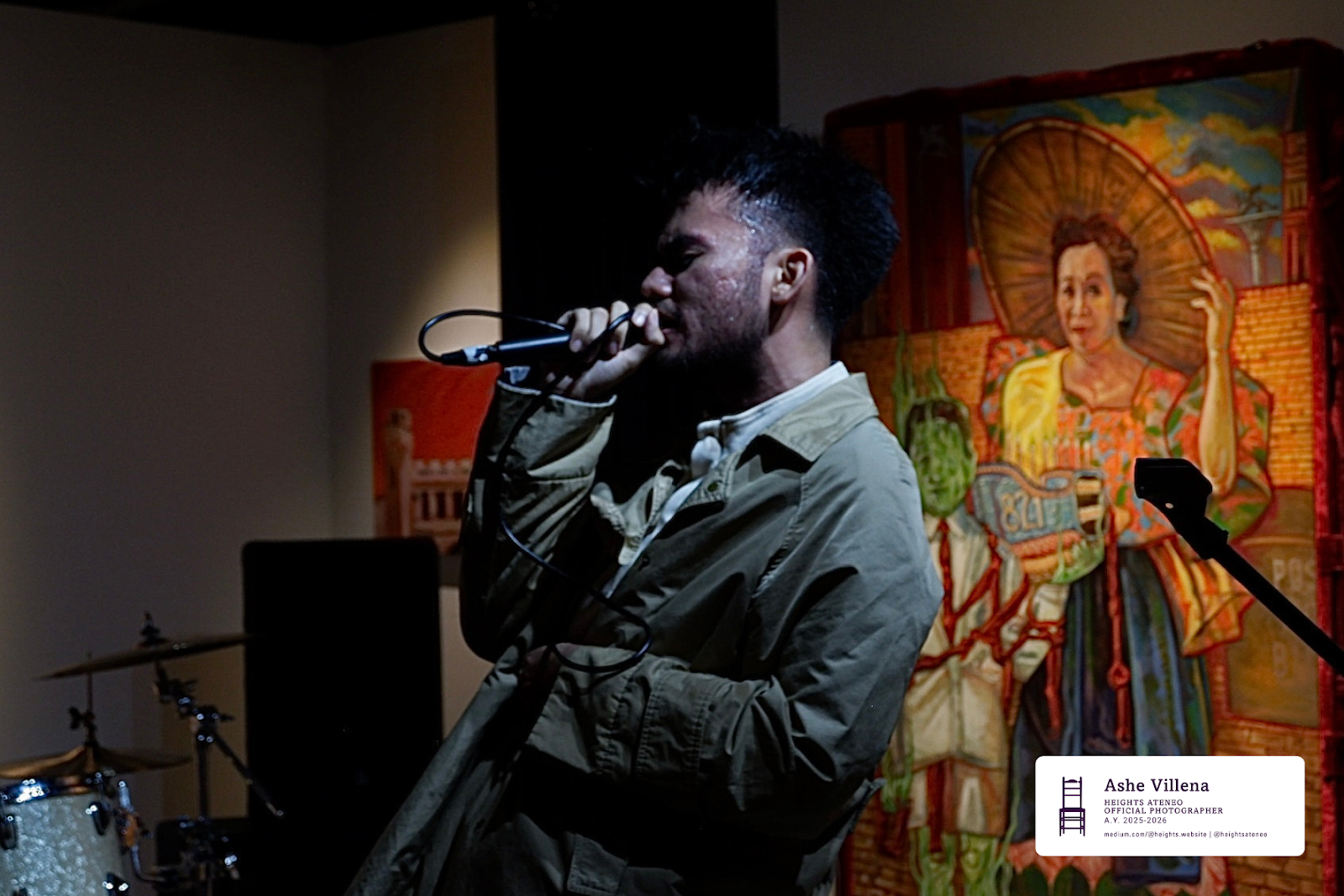
Another band that dazzled the audience with their performance was All Organic Milk Goodness (AOMG), a five-piece progressive metal music group from Manila. Growing up surrounded by different blends of music, this “meme-cultured, brainrotted-esque” band believes that music is a medium to express themselves and be in the moment. “Music helps me put harder emotions into something more concrete, like something other people would relate to,” shares Nic, AOMG’s drummer. “Because sometimes it’s hard for me to put stuff into words.” Liam, their singer, sums it up with the band’s official motto: "The cringe is to be free. It’s really simple but it gets me through a lot of stuff.”
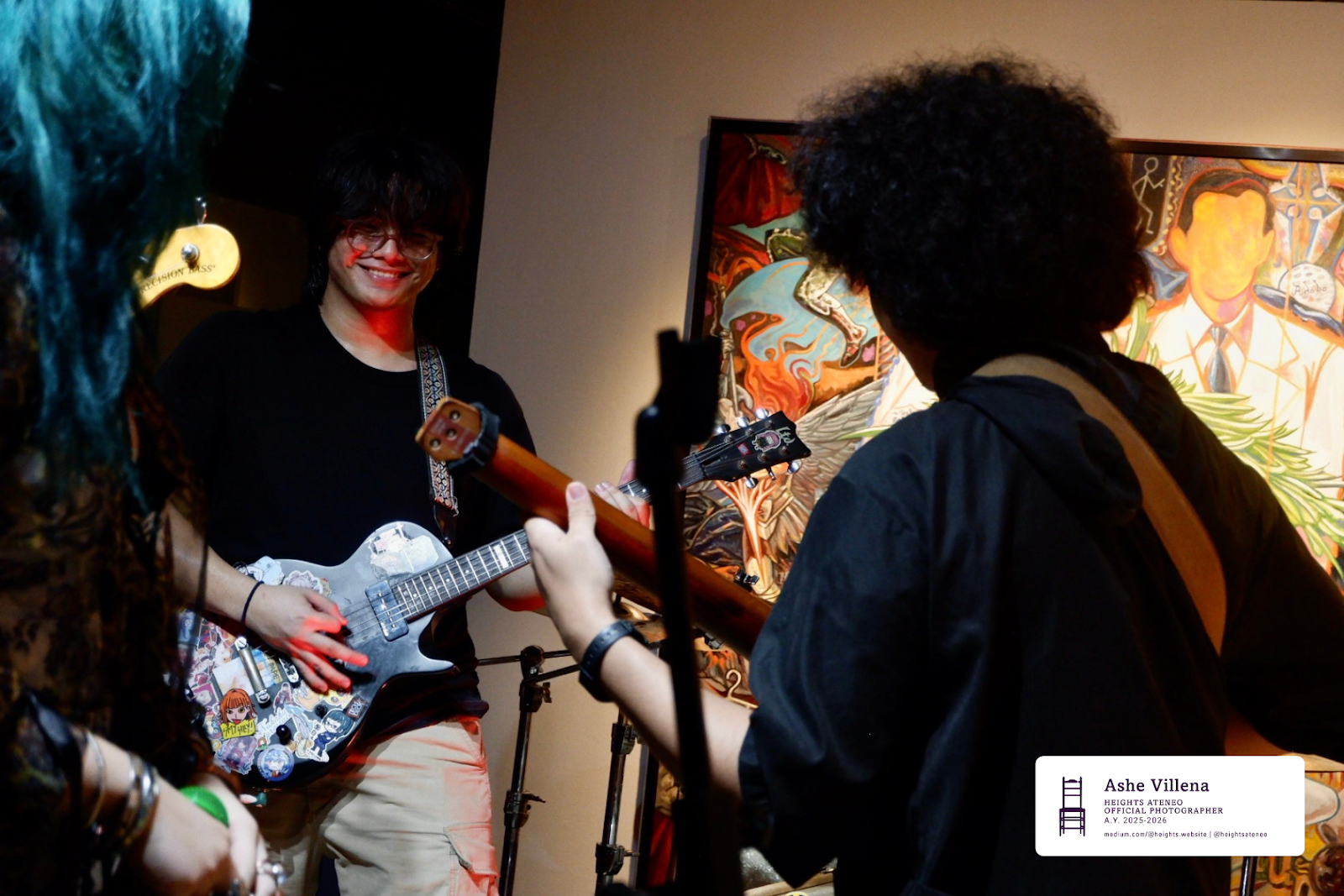
Even off-stage, these bands also have personal advocacies and are grounded in those causes that matter to them. For instance, sci fye’s members believe in more inclusive healthcare for persons with disabilities, homelessness in urban areas, and free education. Despite the band’s irreverent tone, AOMG’s members ground themselves in beliefs such as animal welfare and mental health awareness. These beliefs are the heart of the purpose of Isang Sandali!—even though it was just a single night performance, it was filled with music that was meant to express themselves and uplift others for a long time.
In the end, the grand spirit of SanDale: Sa Madali, Nadadale and Isang Sandali! is powered by the use of visual art and music not only as a form of human expression, but also as a voice for connection with others and a powerful stand on different advocacies. Through creatively repurposed materials of various kinds, SanDale is a passionate and impactful reminder of stories of displaced communities and the deteriorating environment that are continuously being ignored and slowly being forgotten. Isang Sandali! carried on the power of advocacy through the different sounds that unite under one purpose: to be one as a community. Truly, it was a night that converged the boundaries between music, art, and activism through the fleeting moments of amplified melodies and striking artworks. In doing so, Gravity Art Space offered a space, although only for a moment, for reflection and action towards the goal of solidarity. After all, art is political and a protest—even if it is just isang sandali.
Dom is a BFA Information Design junior from the Ateneo de Manila University. She has a passion to bridge the beauty of visual arts and music together as a means of self-expression and understanding the intricacies of society. Usually found in gig places for inspiration, her indie punk rock style emerges through her illustrations and photos. Her works can be found on Instagram: @quarked.up
Shine Cabantog is a junior Information Design student at the Ateneo de Manila University. She writes and illustrates to make sense of the world, or at least to make it a little more fun. Her work often finds home in eccentric corners: sometimes online, sometimes in print, always stitched with a bit of herself. Find more on Instagram: @silangan.psd
We are calling for contributions for the next set of articles to be featured right in our next folio. Come and submit your works today!